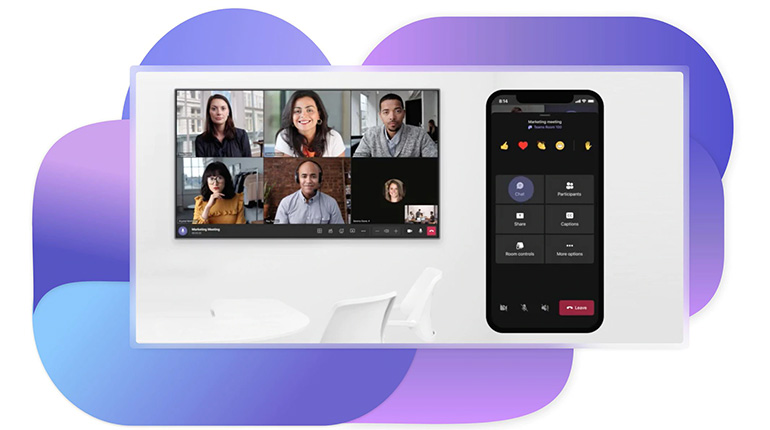Are you considering making the switch to Teams phones? If so, you are not alone. Many businesses are making the switch to take advantage of the features offered by Teams phones. In this blog post, we will discuss some of the benefits of making the switch and how you can make the transition as smooth as possible. Keep reading to learn more.
Benefits of Switching to Teams Phones
1. Improved collaboration and communication
One of the biggest benefits of switching to Teams phones is the improved collaboration and communication that they offer. With features like video conferencing, instant messaging, and file sharing, Teams phones make it easy for employees to stay connected and work together on projects.
2. Increased productivity
Teams phones can also help to increase employee productivity. With features like call forwarding and voicemail, employees can stay connected even when they are away from their desks. And with the ability to make and receive calls from anywhere, employees can stay productive even when they are on the go.
3. Reduced costs
Another big benefit of switching to Teams phones is the cost savings that they offer. With a hosted VoIP solution, businesses can save money on traditional phone lines and long-distance calls. Plus, with features like call forwarding and voicemail, businesses can eliminate the need for expensive hardware like PBX systems.
How to Switch Phone Systems to Teams Phones
Now that we have discussed some of the benefits of switching phone systems to Teams phones, let us look at how you can make the transition. Here are a few tips to help you switch from your old phone system to Teams Phones:
1. Research Your Options
Before you make the switch, it is important to do your research and compare different platforms and phone providers. This will help you find a solution that fits your budget and meets your business needs.
2. Train Your Employees
Once you have selected a Teams phone provider, it is important to train your employees on how to use the new system. This will ensure that they can take advantage of all the features and stay productive.
3. Test the System
Before you make the switch, you should also test the system to make sure that it is working properly. This will help you avoid any disruptions when you make the switch and ensure that your employees can stay connected.
Selecting a Teams Phone Architecture Option
When you are ready to make the switch, you will need to select a phone architecture option for your business. There are two main options: On-premises, Cloud-based, and Mixed-mode phone systems.
On-Premises Solutions
On-premises solutions are ideal for businesses that have an existing on-premises PBX system. With an on-premises solution, you can keep your current phone numbers and extend your PBX features to Teams phones.
Cloud-Based Solutions
Cloud-based solutions are a good option for businesses that do not have an existing PBX system. With a cloud-based solution, you can port your current phone numbers to the cloud and take advantage of all the features offered by Teams phones.
Mixed-Mode Phone System
Another option is to use a mixed-mode phone system. With a mixed-mode system, you can keep your existing on-premises PBX and add Teams phones. This option gives you the best of both worlds and allows you to take advantage of all the features offered by both solutions.
How the Microsoft Teams Phone System Works
Now that we have covered the basics of switching phone systems to Teams phones, let us take a closer look at how the Microsoft Teams phone system works. The Microsoft Teams phone system uses Voice over IP (VoIP) to make and receive calls. VoIP is a technology that allows you to make calls over the internet instead of traditional phone lines.
With VoIP, the system converts your calls into digital data and transmits them over the internet. The system then converts this data back into a voice signal on the other end. This allows you to make and receive calls just like you would with a traditional phone line.
The Benefits of VoIP
There are many benefits of using VoIP for your business calls. Here are a few of the most notable benefits:
1. Cost Savings
With VoIP, you can eliminate the need for traditional phone lines and long-distance calls. Plus, with features like call forwarding and voicemail, you can eliminate the need for expensive hardware like PBX systems.
2. Increased Productivity
With VoIP, you can make and receive calls from anywhere, allowing you to stay productive even when you are on the go.
3. Enhanced Call Quality
VoIP also offers enhanced call quality compared to traditional phone lines. With VoIP, the system transmits your calls over a digital network, providing clearer phone calls.
4. Advanced Features
VoIP also offers several advanced features that can help you be more productive and efficient. For example, with VoIP, you can take advantage of features like call forwarding, voicemail, and caller ID.
5. Scalability
Finally, VoIP is highly scalable, making it a good option for businesses of all sizes. With VoIP, you can easily add or remove users as your business grows.
The Bottom Line
If you are thinking about switching phone systems to Teams phones, now is the time to make the switch. You can take advantage of all the benefits offered by Teams phones and eliminate the need for traditional phone lines. Plus, with features like call forwarding and voicemail, you can increase your productivity and efficiency. If you are confused about which phone system architecture option is best for your business, we’ll help you choose the right solution for your business and make sure that your transition to Teams phones is seamless.

